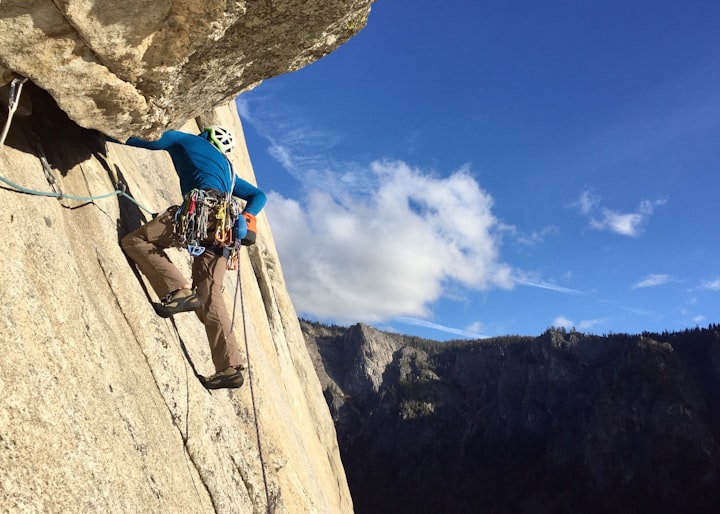
The scramble for MORE self-esteem in today’s world drives many of us. But what if we leave scaling the steep cliff of self-esteem behind? What mindset would be better?
Self-compassion may offer a better option.
The Self-Esteem Scramble
The quest for self-esteem is engrained in us from a young age. From "Be All You Can Be" to "You Can Do Anything" campaigns, our culture tells us to esteem ourselves more. Why have so many advertisers used self-esteem to sell their messaging?
First published over 75 years ago, Maslow's hierarchy of needs has since become embedded in our cultural psyche. It is the most referred to psychological theory on self-esteem. The theory puts self-esteem on a fourth tier above physical, safety and belongingness. We reach for self-esteem after meeting those more basic needs. A longer piece by Francesca Flood about self-esteem and the hierarchy is here.
As a snapshot, in Maslow’s ascending pyramid of five needs, self-esteem is second only to the enigma of a need for self-actualization. Self-actualization is internal, nebulous, and solitary. Self-esteem is more observable, competitive and better understood. Most adults leave self-actualization to the gurus-on-the-mountain types. So, self-esteem becomes the highest need to meet that we reveal to others. It shows well. And since it shows well,…
Self-esteem sells.

Problems with a self-esteem mindset
Self-esteem has its ups and downs. We base it on excelling, being good enough, and even superior at something. When we’re rated higher than others, self-esteem boosts. When rated lower, self-esteem deflates.
The quest to be good enough leads to emotional roller coasters. We respond to cues that assess our abilities and accomplishments. We base how we esteem ourselves on matters we hold dear.
If we base self-esteem on being talented writers, for example, we respond to praise and criticism with volatility. If criticism is harsh, from a self-esteem mindset we may respond with angry refutation, sad deflation, or dismissive denial. If praised, we scale the self-esteem cliff higher.
Author of “Self-Compassion," Kristin Neff suggests comparison drives self-esteem assessment. We compare our self-worth to others along what we value. That may be strength, intellect, wealth or any myriad of traits. How successful are we compared to others on a valued trait? Esteem leads to rating those superior and those lesser on what we value.
That comparison creates separateness and threatens our sense of belonging. For example, if we esteem ourselves as the strongest weightlifter at the gym, we rate ourselves above others on that trait. But if we are so different, do we then need a better gym? By asking that question, we no longer feel we belong with the other gym members. Self-esteem pursuit broke that sense of belonging we had to our gym membership.
With a self-esteem mindset, belongingness often evaporates. Recall in Maslow’s hierarchy that the need to belong is more essential than self-esteem is. Scaling the cliff of self-esteem works against fulfilling our belongingness needs.

Why change to a self-compassion mindset?
Isn’t the scramble for self-esteem simply a part of life? Isn’t self-esteem work still worthwhile?
Self-esteem work with professionals likely holds value for those in the extremes. Whether on the far low end or far high end, those with extreme levels of self-esteem may need helpful therapy. But the vast majority of us are within a healthy range of self-esteem.
Focusing on self-compassion better satisfies our true needs, such as belongingness. Self-compassion is likely a better focus than self-esteem for most of us.
Self-esteem vs. self-compassion
I feel I’m among the healthy with self-esteem. My focus on compassion developed from meditation. I was first meditating on my compassion toward others. Then, I developed the related focus on self-compassion.
During the covid pandemic, I've found it hard to have compassion for those fighting public precautions, such as wearing masks. I felt compassion for the sick, disadvantaged, and afflicted by the illness. No problem. But mustering compassion for those opposing safety measures who “should know better” stumped me. Facing their contrary actions, I’d first respond with anger rather than compassion.

While meditating to correct that, I realized I also lacked self-compassion. When feeling I “should know better” about certain things, I'd respond with anger at myself. To learn to be more compassionate to others, I needed to first look at my lack of self-compassion. But I needed guidance on how to better practice self-compassion. So, I searched for resources and found a seminar.
I attended a weekend seminar online headed by Kristin Neff. While preparing for and taking part in the seminar, self-compassion practice surprised me. It was much more centering for me than my usual self-esteem mindset. But self-compassion wasn’t always easy to muster.
One example when it wasn’t easy to muster was when I responded to other drivers on the road.
A personal example using a driving scenario
“That lousy so-and-so bad driver!” This is typical of my response to someone who cuts me off while I’m driving. After a minute of seething, I think, “Why’d I let myself get that upset. I should shake off things like that. I’m such a bad so-and-so.”
That may be nicer language than I would use for an event that occurs at least once a week. The gist of such self-recrimination is steeped in a self-esteem perspective. The other so-and-so driver is “bad” at driving, I esteem my driving as better. I “should” have responded better to my anger. I’m “bad” compared to imagined better-tempered other drivers. So my esteem deflates. Esteem is first elevated and then goes down.
While driving, I have regularly felt angry toward other drivers, then self-recriminating afterward. Recall that we respond to ourselves with either a self-esteem or a self-compassion mindset. A mindset of self-esteem keeps this cycle going. “They” are bad drivers. I’m bad at how I handle and express my anger toward them. Everyone in this scenario is bad or “lesser than” on an esteem rating, and nothing’s resolved.

Compassion, instead of esteem, allows slow improvement with no one being "bad" or lesser than anyone else. How do things change when I practice that instead?
Responding with compassion instead would come with caring empathy toward others and ourselves. Self-compassion can still acknowledge we’d like things to be different. It isn’t about deadening our response, but changing it.
Initially, when practicing self-compassion, I’d likely have the same first thought. Suppose I’d still complain, “That so-and-so driver cut me off.” But then, I can pause and control my second thought. Pausing is a big deal because it allows us the time to break out of entrenched habits.
After pausing, compassion might prompt me to say, “It’s no big deal. Nothing bad happened. That other driver made a small mistake.” If I then think I “shouldn’t” have called them a so-and-so at first, I can pause again. I may follow that thought with, “Yes, your reaction was overblown at first. You don’t have to be perfect. It is hard to handle other drivers’ mistakes while you’re driving. Anger is only a feeling. What you do with that feeling is what matters. You made progress and can correct course even earlier and better next time.”
Recognizing the progress we’ve made and striving to do better next time is also important. It helps with learning new responses and breaking old habits.

The view from a self-compassion mindset
Self-compassion may not feel natural at first. It takes time for us to build new habits of compassionate responses to life’s encounters. Eventually, we learn to shake off minor disturbances with ease. During the prior esteem mindset, there are ups and downs. With compassion, life is more of a pleasant, even keel.
Though new in employing self-compassion instead of self-esteem, my perspective has changed. The self-esteem scramble appears less like scaling a cliff. Now, it looks like busily going up and down an unending stairwell, ordinary and staid, void of allure.

By not wasting energy on those stairs, I have more drive for my other projects. No need to climb the self-esteem incline at all, is there?
Self-compassion is the better mindset
Self-esteem and the esteem mindset are pervasive influences in modern society. But the incline for MORE self-esteem has no peak. It never ends.
Time marches on. Sustaining self-esteem about our looks, our intellect, and our strength requires ongoing effort. Perhaps we would reach higher and higher as the days and years and decades pass. Climbing or scaling without end eventually leaves us among… no one else. So, the more essential belongingness needs are no longer met. The self-esteem scramble threatens true need fulfillment rather than satisfies it.
Clearly, self-compassion offers a better response. Leaving self-esteem behind blows the lid off of Maslow’s pyramidal hierarchy. By doing that, belongingness becomes our highest need. Instead of a peak that we’d reach alone, belongingness is a plateau we share together.

With self-compassion, we are all worthy and belong simply by being ourselves.
With all our strengths and weaknesses, and all our pluses and minuses, self-compassion champions us to be ourselves. Then, it is easier to have compassion and appreciate others as they are.
Other people may choose to continue climbing the self-esteem incline. But some will join those of us that rely on compassion and find more contentment. After all, leaving the scramble for self-esteem behind is a choice that is ours to make.
About the Creator
Kalen Cap
Writer living in along Lake Erie on Catawba Island, Ohio.






Comments
There are no comments for this story
Be the first to respond and start the conversation.